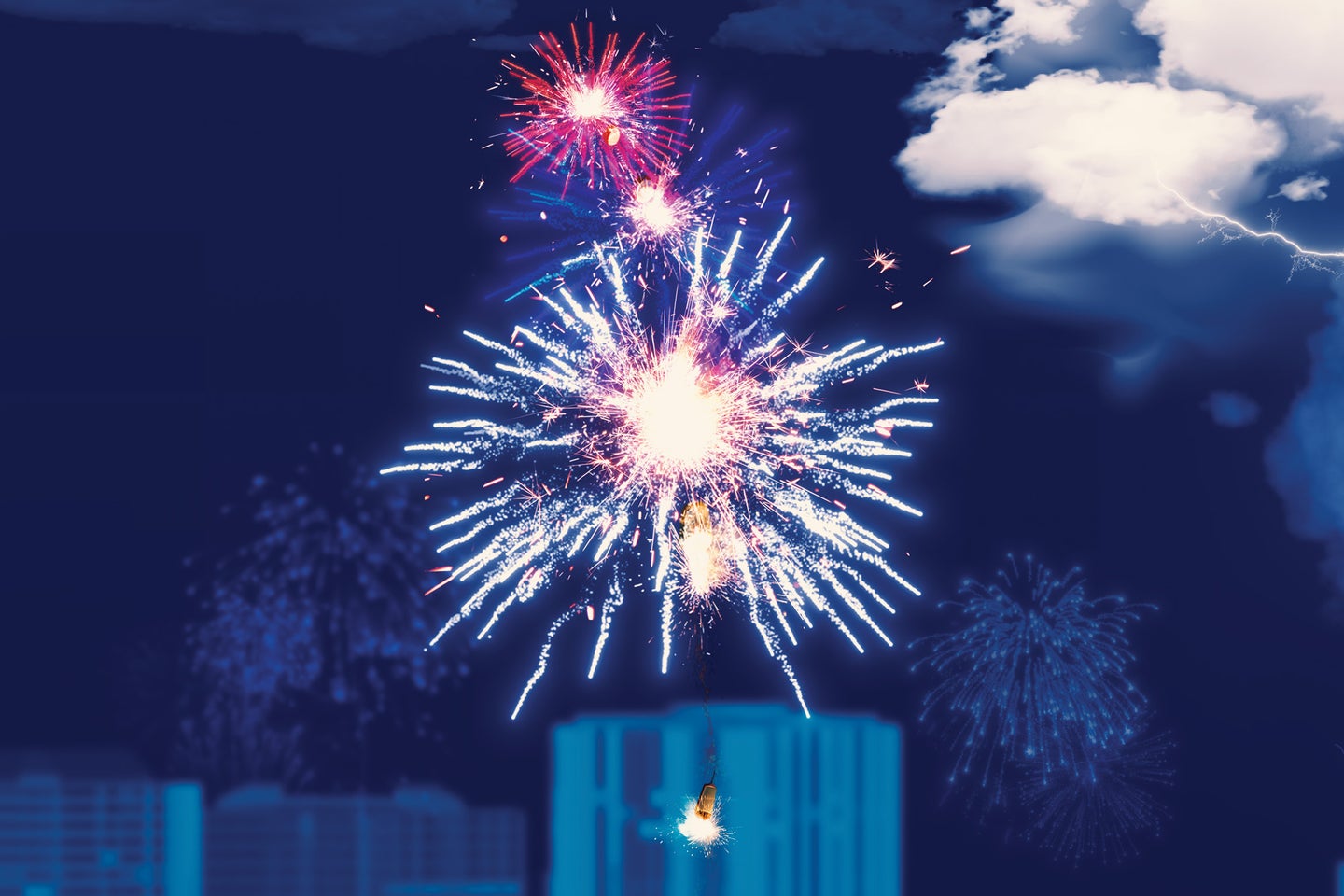The science behind a firework’s big ka-boom
Come on let your colors burst.

Even the most elaborate fireworks show starts with a single crack, as black powder shoots shell from mortar. That launch sets off a cascade of whooshes, zips, and bangs that send colorful shapes soaring into the sky. Here’s how engineers can tweak these pyrotechnics to provide spectators with stunning displays.
Light
Fireworks have followed the same basic format for centuries: As a fuse inside a sky-bound shell burns down, it ignites a series of explosive charges. Little pellets called “stars” sit in clusters between them and burst aflame as they fly out into the air.
Color
“White fire” ruled the skies until the 1800s, when engineers first added metals and salts to their mixtures to create a rainbow of hues. Strontium (red), aluminum (white), and copper (blue) are common components.
Sound
Want your show to really pop? Tightly cramming chemicals into tubes makes a sharp whistle as gases squeeze out like steam from a kettle. Drilling tiny exhaust holes on the sides of a snugly sealed charge creates a delightful, buzzy hum as the apparatus spins.
This story originally published in the Noise, Winter 2019 issue of Popular Science.